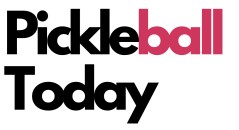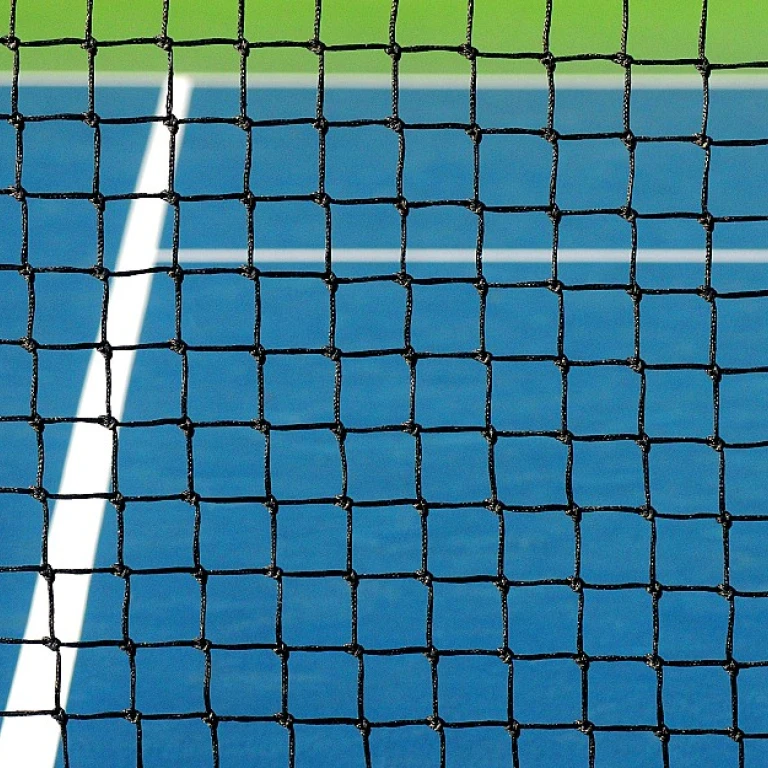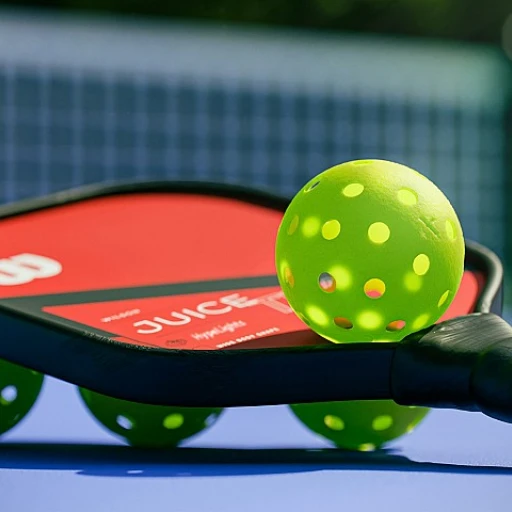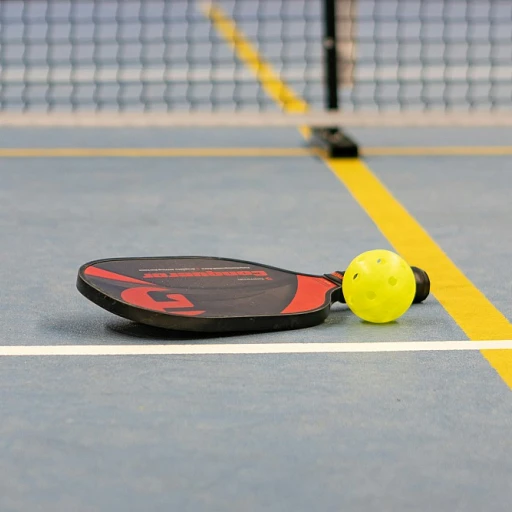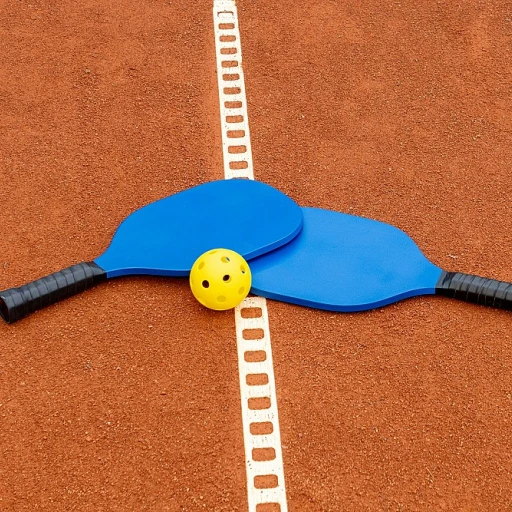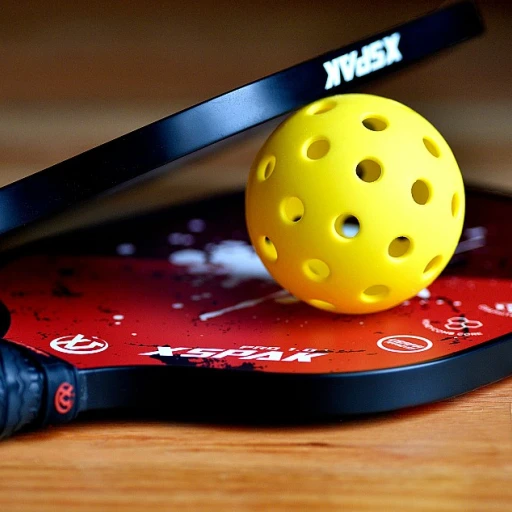What is a Let in Pickleball?
The Concept of "Let" in Pickleball
If you’re venturing into pickleball, understanding the nuanced rules is crucial for a smooth game experience. One of these rules involves the "let" serve—a situation that pauses play and often confuses new players. The pickleball's flight during a serve can sometimes result in a let, especially when the ball brushes against the net before landing in the correct service area.
In essence, a let in pickleball occurs when the serve hits the net but still lands within the designated service box of the receiving court. Unlike a fault, which results in losing the serve to the opposing team, a let grants a replay of the serve without penalty. This specific rule ensures fairness and sustains the game’s flow.
To dive deeper into understanding nuances such as these, including how ratings affect your pickleball journey, check out the pickleball ratings chart. This resource is particularly invaluable for assessing skill levels and refining techniques as you embrace the sport.
Rules Governing Lets in Pickleball
Key Guidelines for Understanding the Let Rule
The let rule in pickleball serves as a pivotal aspect of the game, ensuring fairness and smooth play when the unexpected happens. Let's delve into how this rule is structured in official pickleball games.
To start, when a serve hits the top of the net and lands correctly in the opponent’s service box, it is considered a let. The server is allowed to retry the serve without penalty. This applies as long as the ball hits the net and then lands in the correct service area on the opponent's side.
- First Serve Faults: If the serve contacts the net but fails to land in the correct service court after a let, the serving team commits a fault. The server gets another opportunity to correctly serve the pickleball.
- Within Boundaries: All play must adhere to the rule that dictates the ball lands accurately within the side court boundaries, ensuring it's not a fault due to an oversight in serving.
- No Service Redos: The let rule only grants a redo for the initial serve; if the ball hits the net again and fails to enter the correct service box, the serve does not continue indefinitely.
Ensuring that these rules are meticulously followed is crucial for maintaining a structured flow in play. A let can, at times, disrupt the pace; however, understanding its implications, with reference to the pickleball rules governing the volley zone and player conduct, is essential for all involved. For those eager to keep their game in check, mastering the scorekeeping dynamics can provide a deeper grasp of maintaining integrity and efficiency during matches.
Thus, clarity about these rules helps players, whether in singles or doubles, grasp when a service let is applicable and how it impacts their overall strategy and interaction with the court dynamics.
Common Scenarios Leading to Lets
Typical Situations Triggering Lets in Pickleball
In pickleball, certain scenarios on the court commonly lead to a let being called. Understanding these situations helps players navigate the game smoothly and ensure fairness. Here's a look at some frequent cases:- Serve Hits Net But Lands Correctly: If a serve hits the net, yet lands correctly in the service box, it's called a let. This scenario demands a replay of the serve without penalty, maintaining the balance in the game dynamics.
- Ball Drops from Adjacent Court: Sometimes, a ball from an adjacent court may roll into the playing area. To prevent interruptions, play is paused, and a let is issued, allowing the rally to restart fairly without any party at a disadvantage.
- Distractions and Unexpected Events: Distractions such as a loud noise or an errant ball can disrupt play, and according to pickleball rules, this may justify a let.
- Equipment Malfunctions: Rarely, equipment failure like a paddle breaking mid-play can lead to a let. The players must pause and reset the game, ensuring all equipment is in good condition before resuming.
Impact of Lets on Game Flow
The Influence of Lets on the Game Dynamics
In pickleball, lets impact the game flow in several critical ways. While the rules provide a clear guideline to manage such instances, their occurrences can subtly alter the rhythm and momentum on the court. Understanding these effects is essential for both players and spectators to appreciate the nuances of the game.
- Service Interruptions: When a let occurs during a pickleball serve, it disrupts the ongoing sequence, forcing the server to repeat the serve. This can momentarily halt the game as both teams regroup and reset their strategies. Though the game is paused briefly, it grants the receiving team extra time to strategize as well.
- Momentum Shift: A let can cause a shift in game momentum, particularly if it recurs multiple times. Continuous lets may lead players to lose their concentration, reducing the smoothness of play and affecting the mental endurance of the serving team.
- Psychological Aspect: Frequent interruptions due to lets can undercut the players’ focus and amplify nervousness, especially if players face difficulties executing a correct service after repeated lets. This mental aspect can dramatically influence performance levels.
- Flow and Strategy: Even a single let can prompt alterations in a player’s serving or positioning strategy. Players may adjust their stance or trajectory to avoid triggering a let due to the ball hitting the net while serving.
Effectively managing these interruptions is crucial; hence, players are advised to stay mentally prepared and resilient. Adhering to the fundamental pickleball rules ensures that these interruptions are minimal and manageable. Moreover, fostering a good rhythm post-let can also enhance overall gameplay experience, reinforcing the sport’s exciting dynamics.
Controversies and Debates Around Lets
The Debate Surrounding the Impact of Lets
Lets in pickleball can indeed stir debates among enthusiasts and coaches. Some argue that repetitive lets can disrupt the natural flow of the game, causing frustration for both players and spectators. In the context of the serve, when the ball hits the net lands in the correct service box, it results in a let. This can become particularly contentious if it happens repeatedly within a single match. Points of Contention:- Disruption vs. Fair Play: While lets are designed to uphold fairness according to the rules, they can also slow down the game unnecessarily. This is especially problematic in a fast-paced setting where momentum is key.
- Subjectivity in Calls: The determination of a let can sometimes be subjective, especially when considering the angle at which a ball hits net and lands. This can lead to disagreements between the serving team and the receiving team.
- Competitive Levels: At more competitive levels, the rules governing lets are applied strictly to maintain standards. However, newer players may face challenges in ensuring consistent application of these rules.
Tips for Players: Handling Lets Effectively
Adjusting to Unexpected Lets in Pickleball
Handling lets effectively requires players to adapt to unexpected game interruptions. Here are a few strategies that can aid players in maintaining focus and performance despite lets:- Stay Calm and Collected: A let can disrupt your flow, but maintaining composure is key. Recognize that lets are a part of the game, like any other rule that requires adjustment.
- Communicate with Your Partner: If you're part of a doubles team, effective communication is crucial. Quickly discuss the let situation and strategize the next move during the brief pause.
- Anticipate Common Scenarios: Learn from common scenarios leading to lets, such as the ball hitting the net during a serve. Understanding these scenarios can help players anticipate when a let might be called.
- Recalibrate Your Serve: Mastery of serves can reduce the likelihood of lets. Practice both regular and drop serves to ensure accuracy and consistency within the service court. This can minimize the scenarios where the ball hits the net and results in a let.
- Respect the Rules: Familiarize yourself with the pickleball rules governing lets. Knowing when a let is valid will prevent potential disputes, making your play smoother and more enjoyable.
- Focus on Strategy: Use the let as an opportunity to reassess your strategy. Consider how to position yourself better on the court or adjust your playing style to gain an advantage after the interruption.
- Practice Reflex and Reaction: Regular practice can improve your reaction time, helping you handle lets with confidence during play. Incorporate drills focusing on reflexes and net play.
